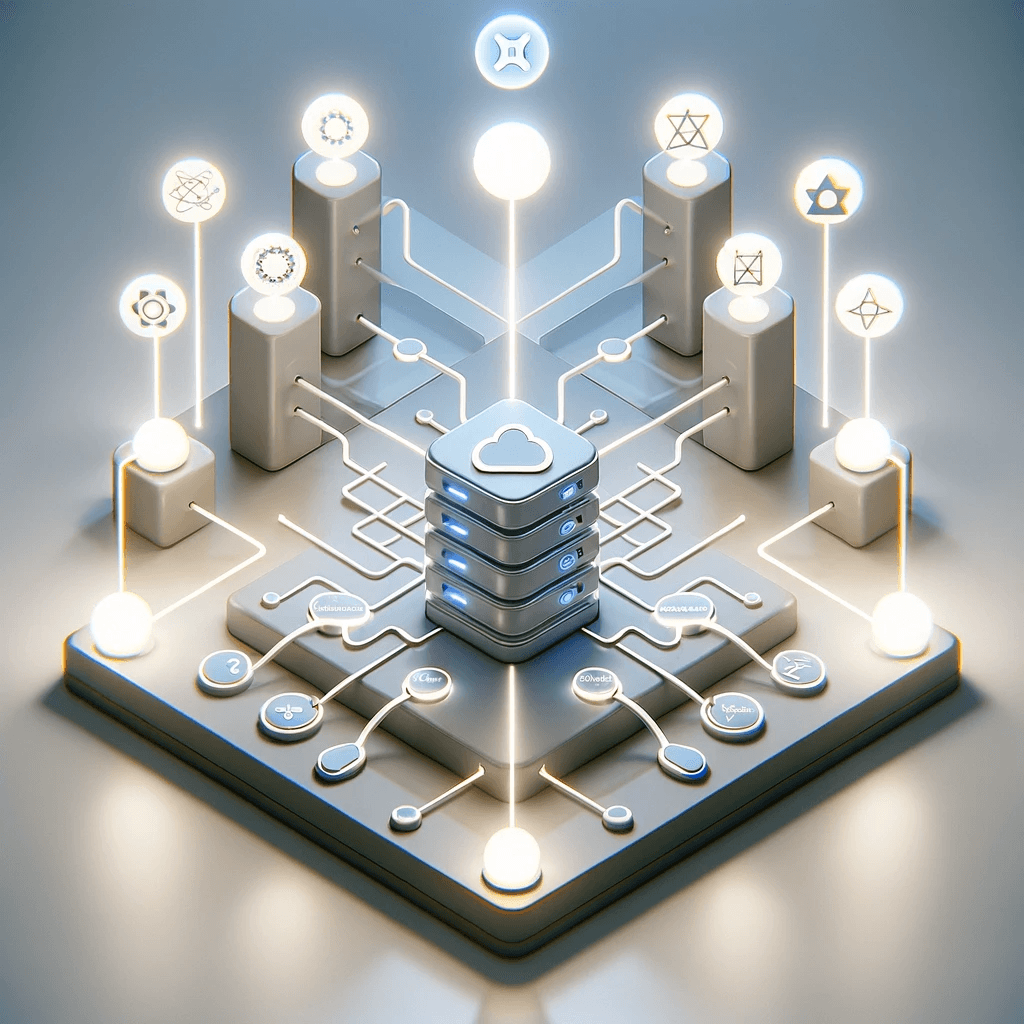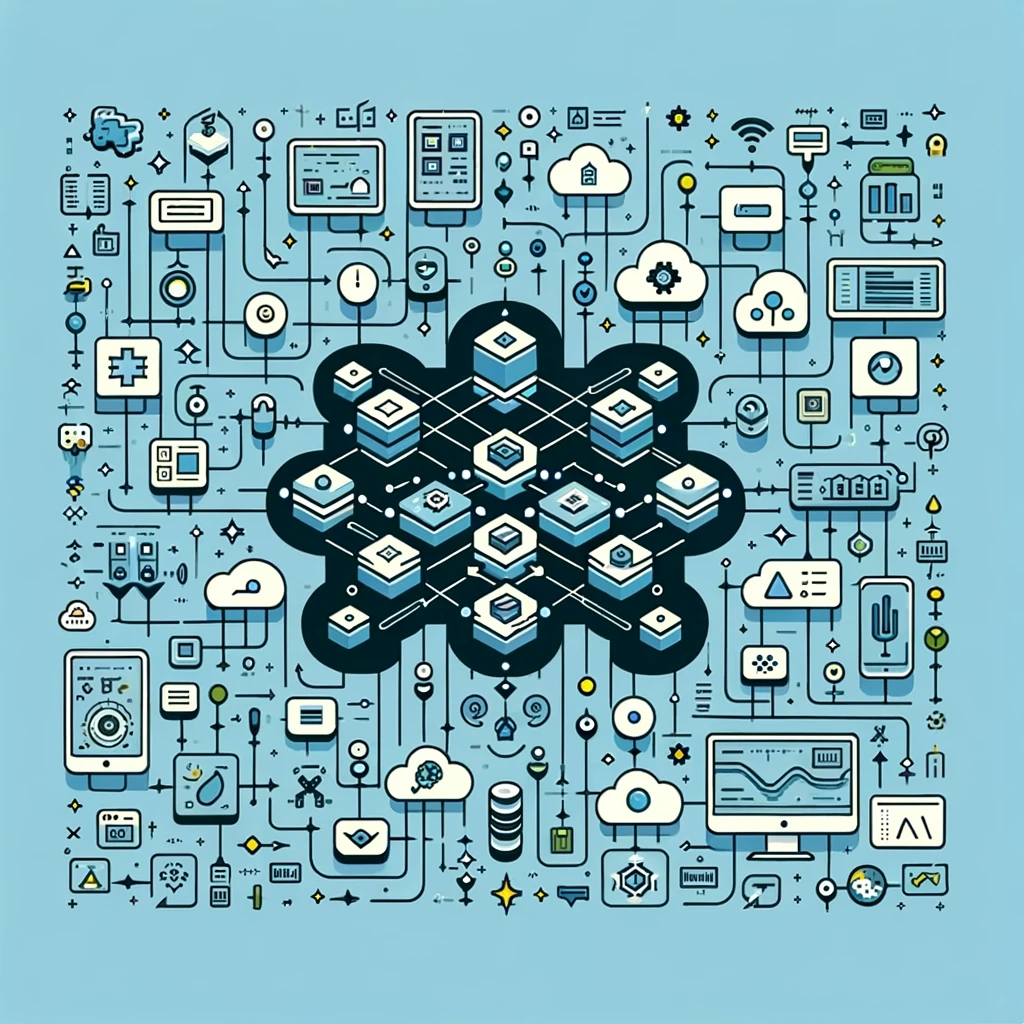Microservice Management

Table of contents:
Categories:
Centralized Content Repository
Orbitype can serve as a central hub for all digital assets and content needed by microservices, ensuring consistency in information distribution and management, enabling diverse services to access and display updated content without duplicate issues.
API-Driven Content Delivery
Orbitype's API-driven nature allows for seamless integration with microservices, regardless of their technology or programming language, ensuring smooth content flow between the CMS and application components.
Decoupled Architecture
Because of its headless CMS design, which enables decoupling from the presentation layer, Orbitype is a great option for microservices architectures that value concern separation.
This allows developers to update and innovate the user experience without having an impact on content management or backend functionality.
Streamlined Content Operations
Orbitype allows content creators and editors to manage content independently from microservices, improving operational efficiency by allowing content updates to be made directly in Orbitype without coordinating with microservice deployments or development cycles.
Scalability and Performance
Because it can accommodate shifting content requirements without creating an issue, Orbitype's scalable design is perfect for microservices-based applications. This makes it essential for applications with varying loads or demand-driven component scalability.
Security and Compliance
Orbitype enforces consistent security policies and access controls for microservices, ensuring compliance with data protection regulations and internal security standards, simplifying the management of permissions and access to sensitive content.
Example Scenario
Imagine a large e-commerce site with a microservices design, where many services manage user profiles, order processing, customer support, and product catalogs. The promotional content, photos, and product descriptions are all managed by Orbitype, which serves as the primary CMS.
Orbitype is utilized by product teams to update inventory and promotional information in real-time, ensuring customers can access the latest product information regardless of the service or interface they use.
This use case demonstrates how Orbitype's adaptable content management tools and integration capabilities make it a great option for managing content in microservices architectures, optimizing workflows, and improving the overall coherence and efficacy of the application ecosystem.
Read more

Corporate Intranets
The Orbitype use case for corporate intranets highlights its efficiency in facilitating internal communications and resource sharing within organizations. Corporate intranets serve as a central hub for employees to access company news, updates, documents, resources, and internal services. In this digital era, having a dynamic and easily navigable intranet is crucial for enhancing employee engagement, streamlining communication, and supporting the operational needs of a business.

Multilingual Websites
The Orbitype use case for multilingual websites demonstrates its capability to efficiently manage and deliver content in multiple languages, catering to a global audience. This functionality is crucial for businesses, organizations, and content creators aiming to reach and engage with users in their native languages, thereby enhancing user experience, increasing accessibility, and potentially expanding their market reach.

Digital Marketing Campaigns
The Orbitype use case for digital marketing campaigns showcases its effectiveness in managing and optimizing content across various online channels to engage audiences, drive conversions, and track campaign performance. In the fast-paced world of digital marketing, being able to quickly adapt and serve personalized content to different segments of your audience is key.

Custom CRM
A custom CRM system is a flexible solution that allows businesses to effectively handle complex datasets and customize workflows to meet their unique requirements. This is made possible by utilizing Orbitype's headless architecture.

Headless CMS
Content Management for Websites is an Integral Part of Orbitype. It is actually where Orbitype comes from. Born on the Web, Orbitype is the Perfect digital transformation tool.

Custom ERP
Using Orbitype to create a custom Enterprise Resource Planning (ERP) system demonstrates an innovative method. It capitalizes on the flexibility and range of its headless architecture to optimize and seamlessly integrate a variety of organizational processes, from procurement to finance.

Cloud Storage
Enhancing Orbitype's cloud storage integration demonstrates its ability to efficiently manage and serve vast amounts of digital assets such as images, videos, documents, and other media files. Leveraging the robustness of cloud storage solutions like Amazon S3, Google Cloud Storage, or Azure Blob Storage, Orbitype's integration facilitates seamless content management and delivery.

Microservice Management
Microservice management with Orbitype demonstrates how well it can organize and coordinate independently deployable services inside of complex applications, with a focus on smooth communication and data sharing.

Admin UI Upgrade
With the help of Orbitype's flexible and modular design, the Admin UI upgrade aims to improve the content management experience for administrators and content authors, resulting in increased usability, productivity, and user happiness.

Archiving Data
Archiving data in Orbitype is a crucial feature designed to empower users with efficient data management and optimization of digital content lifecycle. This streamlined approach not only declutters your CMS but also ensures that historical data is accessible and secure.

Media Libary
Orbitype's Media Library streamlines digital asset management across platforms by storing, organizing, and accessing various media types like images, videos, and documents. This centralized repository enhances content creation, distribution, and maintenance workflows, making it an indispensable asset for users to fully utilize Orbitype's potential.

Corporate Websites (CMS/CRM)
Orbitype bridges the gap between content management (CMS) and customer relationship management (CRM), providing a robust solution for corporate websites that streamlines online presence and customer interactions, fostering engagement and loyalty.

Editorial Sites
Orbitype is a CMS that caters to editorial sites that require flexibility in publishing multimedia-rich content. It can handle dynamic page designs without compromising on content management or delivery speed, making it a valuable choice for online magazines, news portals, blogs, and cultural reviews.

Ticketing
Orbitype is an excellent option for coordinating ticketing systems, and maximizing event management, ticket sales, customer engagement, and analytical insights because of its flexible framework and API-centric design.

eCommerce
Orbitype has an extensive feature set for managing items, orders, customer information, and other aspects, making it especially well-suited for eCommerce systems. The headless CMS approach enables organizations to create dynamic, scalable online stores effortlessly, facilitating seamless integration with various eCommerce frameworks and front-end technologies.

CMS for eCommerce
Orbitype is a robust and versatile eCommerce platform that excels in dynamic content management, product catalog management, and seamless integration with various online sales tools.

Analyst Recognition
Orbitype's capabilities in offering a flexible, scalable, and efficient content management solution make it an ideal candidate for recognition by industry analysts in the digital experience and CMS markets. When industry analysts evaluate CMS platforms, they look for innovation, market impact, technological robustness, and how well these platforms meet current and future digital needs.

CMS for Website
With its headless architecture, Orbitype is a unique and incredibly flexible CMS (Content Management System) that provides unmatched flexibility and adaptability for website development and management requirements.

MACH Alliance
The MACH Alliance advocates for technology ecosystems built on Microservices-based, API-first, Cloud-native SaaS, and Headless principles, aiming to help enterprises create more flexible, agile, and scalable digital experiences. Orbitype, with its headless CMS capabilities, aligns well with the MACH Alliance principles, offering a use case that embodies these modern, forward-thinking approaches to digital infrastructure.

CMS for Mobile Apps
Orbitype's headless CMS empowers developers to seamlessly manage content for diverse platforms, making it ideal for crafting personalized user experiences across mobile apps

Educational Platforms and E-Learning
Orbitype's integration into educational platforms and e-learning exemplifies its adaptability and effectiveness in streamlining content management and delivery, underscoring its pivotal role in enhancing the educational journey.

For Sports Teams and Leagues
Sports clubs and leagues can effectively manage and disseminate content on Orbitype, engaging fans and providing them with up-to-date news, scores, and player information. This use case demonstrates Orbitype's support for multi-platform distribution, sophisticated media management, and dynamic content—all crucial capabilities for the fast-paced world of sports.

Static Websites
Orbitype's headless architecture and flexibility make it an ideal choice for managing static websites, especially those using Amazon S3 for hosting JSON files containing content. This cost-effective, scalable, and performant approach is particularly beneficial for websites with infrequent content changes or high performance requirements.

ATS Application Manager
Orbitype's API-driven ATS and Application Manager streamline recruitment by allowing for efficient management of job postings, applicant information, and hiring workflow, enhancing the overall recruitment experience.